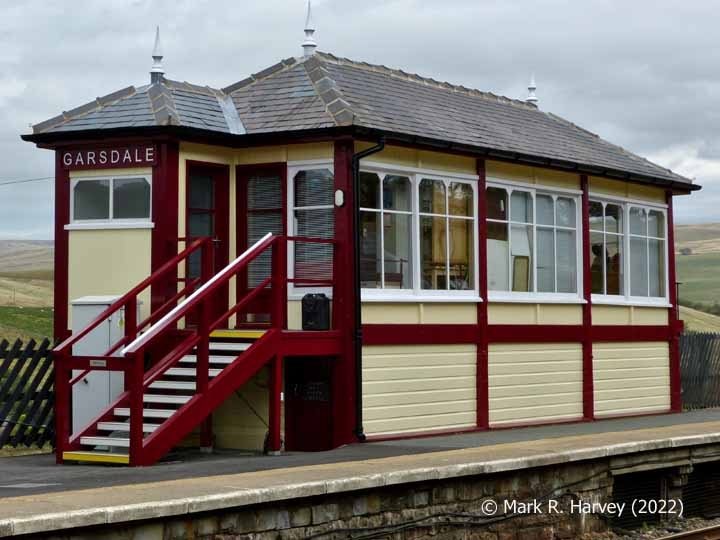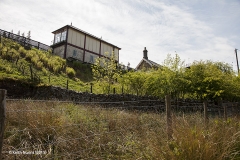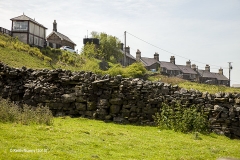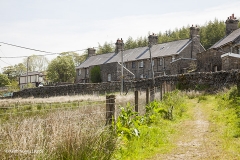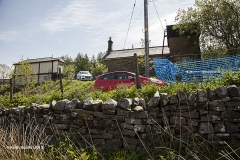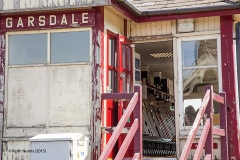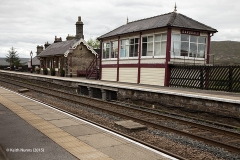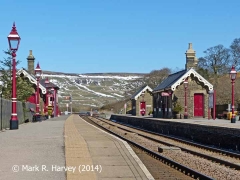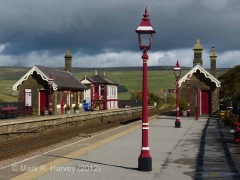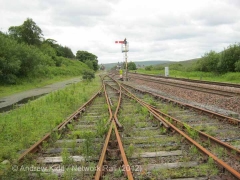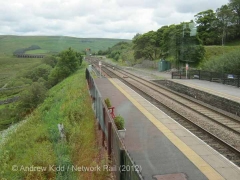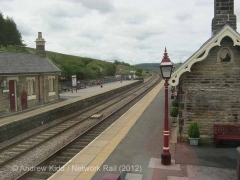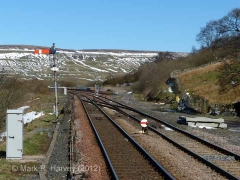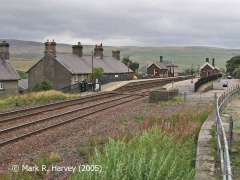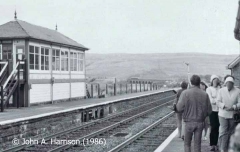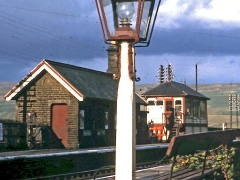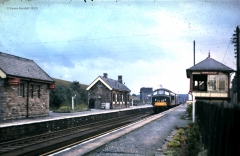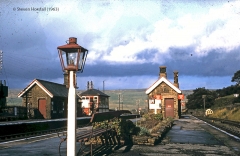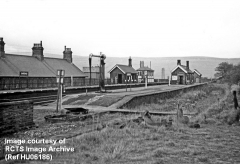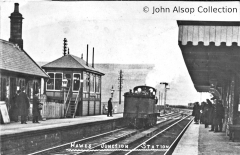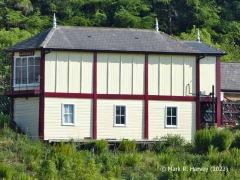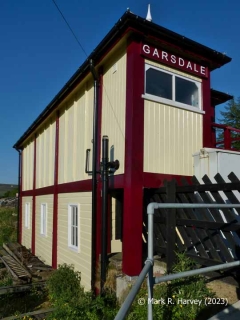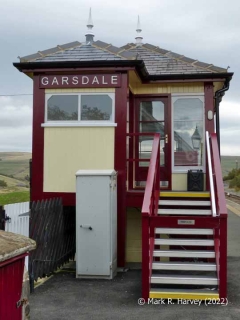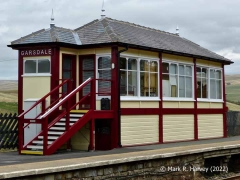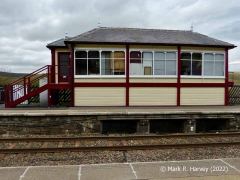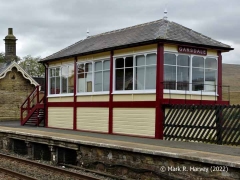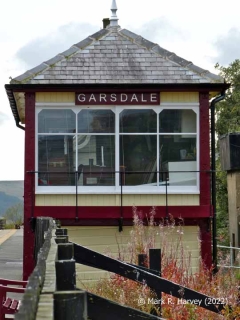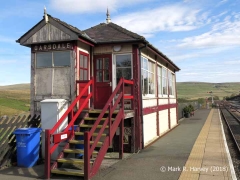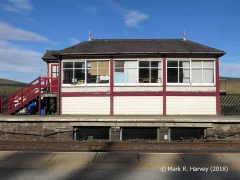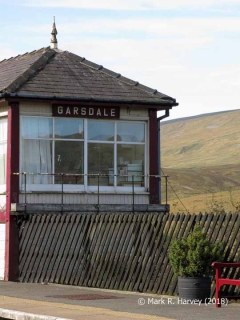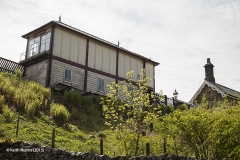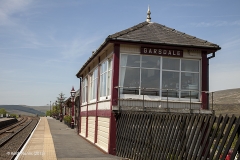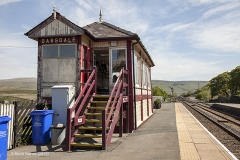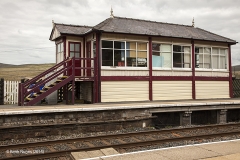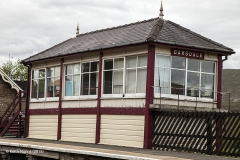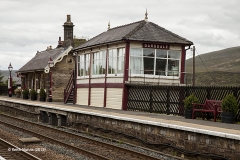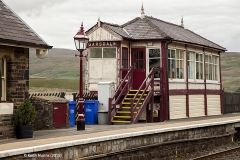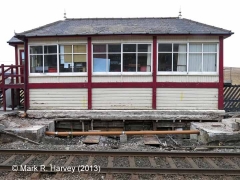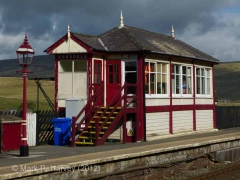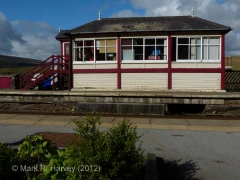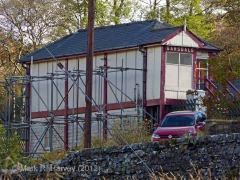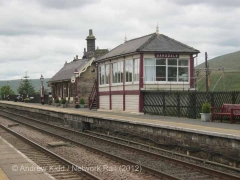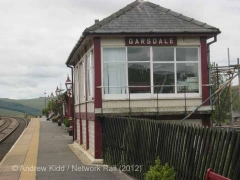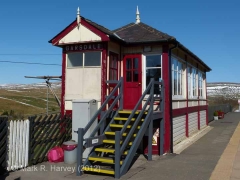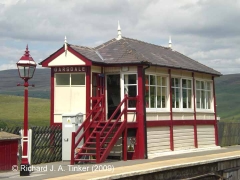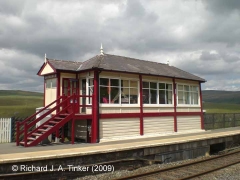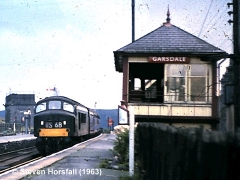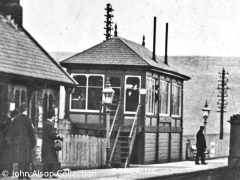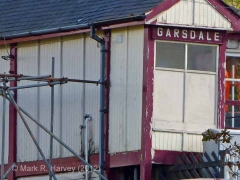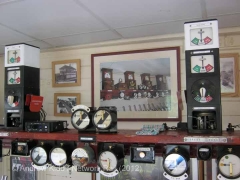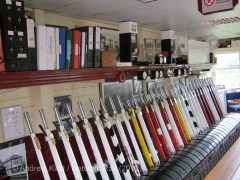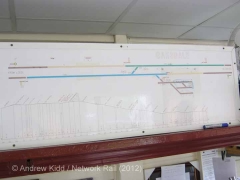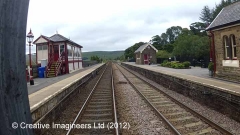The current signal box at Garsdale is a three-bay version of the Midland Railway 'type 4c' standard design and it became operational on 10th July 1910. Its original dimensions were 30ft. long by 10ft. 6in. wide and the operating cabin is 8ft high. It houses a 'type 33R' manually operated 40-lever tappet frame (which was manufactured in 1910 at the Derby signal works).
When first opened, it was known as 'Hawes Junction' signal box and it replaced two earlier signal boxes ('Hawes Junction South' and 'Hawes Junction North'). However, on 1st September 1932, it was renamed to 'Garsdale Station' signal box. (On the same date, the name of the station was officially altered from 'Hawes Junction and Garsdale' to 'Garsdale'.)
On Saturday, 24th December 1910, the operation of this signal box played a key role in the 'Hawes Junction Disaster' (one the most deadly accidents to have occurred on the Settle & Carlisle Railway).
In 1983 (when the line was being run-down for closure), the box was 'switched out' (i.e. it was not used for normal traffic purposes). However, it was maintained in an operational state and it was reactivated for short periods of time when traffic on the line was busier than normal (e.g. due to diversions from the West and East Coast Main Lines and when steam specials were booked to stop at the station to take-on water).
During the second half of the 1990s, the box was re-opened on a part-time basis (as traffic levels began to increase following the line's reprieve from closure).
In 2008, its opening hours were extended to 24/7 to cater for a significant increase in freight traffic. Also during 2008/9, a small extension was added to provide toilet and washing facilities within earshot of the operating floor (thereby reducing the need for the duty signaller to temporarily close the box).
In 2014, remedial work was carried-out to combat a subsidence issue and to extend the life of the box. During this 4-month (£275,000) project, the operating floor was supported by an internal steel frame constructed on a series of 'mini piles' and the building was fully refurbished (including replacement windows, a new slate roof, and repainting).
In 2021, the box’s structural timbers and outside cladding were repaired, the roof and windows were replaced (again), the staircase, toilet extension and window cleaning balcony were rebuilt, a new kitchen was installed, and the entire structure was repainted.

